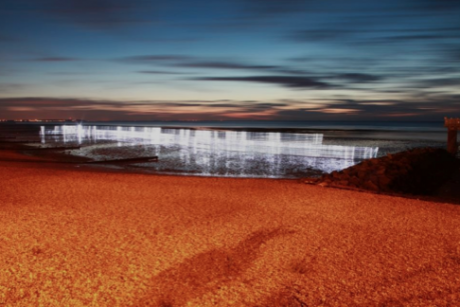Lights, Camera, Duchamp: Creating the Human Tide
It's not too widely known that the great Marcel Duchamp once sojourned in Kent. To mark 100 years since his stint in the south east, Unique Digital and Syzygy have something very special planned...
Marcel Duchamp – an artist perhaps most famous for naming a urinal “Fountain” and presenting it for exhibition – was never too interested in what it was you were looking at. His work marked a departure from the inherently ocularcentric “retinal art”, a term which designated anything you might usually expect to be hanging from a gallery wall.
What use is a piece of art which demands nothing from viewers other than that they have a pair of eyes, he seemed to ask. Could we not go further, engaging all the senses?
On the 100th anniversary of Duchamp’s visit to Kent, Unique Digital and Syzygy have accepted the burden of the artist’s enquiry. Using a 3D Mirror Rig with cameras in a setup never used before, the agencies will extend Duchamp’s legacy into the 21st century with a reinterpretation of one of his signature works.
Human Tide will use light and energy to mimic the process informing Duchamp’s key work “Three Standard Stoppages”. Named by Duchamp as his most important work, “Three Standard Stoppages” involved three one-metre lengths of thread glued to canvas. Whilst it mightn’t sound like much to look at (even Duchamp conceded as much), it did mark the moment at which Duchamp first articulated his desire to introduce an element of chance to art.
In the hope of capturing something of Duchamp’s impetus, Human Tide will mobilise hundreds of people for a one-kilometer walk down a Kentish beach. Carrying with them giant sonar-guided light sticks, the participants will become part of a wall of light marking the point at which the water meets the sand. This process will be recorded and shot with a 3D Mirror Rig, a filming device which records both time lapse and moving long exposure simultaneously.
The result will be a film which traces in light so many journeys on the sand; a mirroring of not only the shape of the tide’s edge on the beach, but also Duchamp’s insistence that process be the focal point of art.
Human Tide is situated at the juncture of an historical anniversary, a technological novelty, and a conceptual reimagining. It is also an opportunity to investigate another kind of tidal flow: social media. A collaborative event of an impressive scope and magnitude, it’s a chance to see how real life experiences are transformed in the digital environment.
Duchamp remarked “for me the ‘Three Stoppages’ was a first gesture liberating me from the past.” It’s the goal of “Human Tide” to make that gesture one relevant today, and I for one can’t wait to get involved.
Keep up to date with the project happening at sunset on Friday 9th August at Herne Bay, Kent through the Human Tide Blog and the Human Tide Twitter account.


